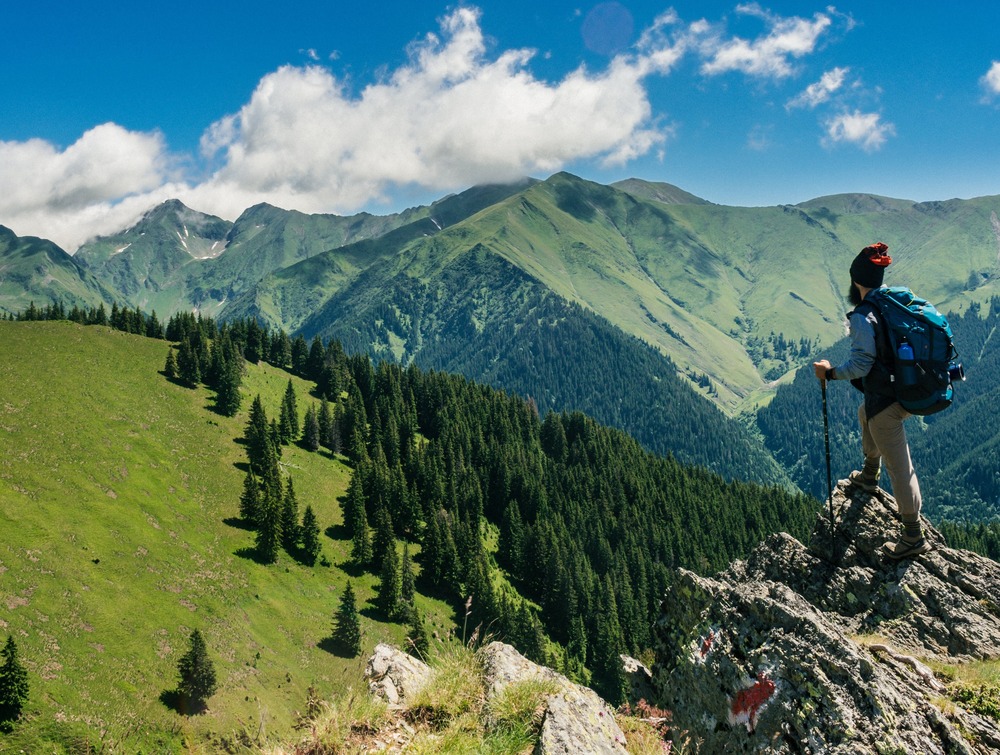Tarp tents have gained significant popularity among outdoor enthusiasts due to their versatility, lightweight design, and weather-resistant properties. In this article, we will delve into the world of tarp tents, understanding their advantages, key features, and how they fit seamlessly into various outdoor adventures. So, sit back and read on about, “Tarp tents, exploring the benefits. Let’s get started.
When it comes to outdoor adventures, having the right shelter can make all the difference. Tarp tents have gained popularity among camping and backpacking enthusiasts for their practicality, flexibility, and cost-effectiveness.
In this guide, we will dive deep into the benefits of tarp tents, explaining why they have become a favourite choice for those who love exploring the great outdoors. Whether you’re a seasoned camper or a novice adventurer, understanding the advantages of tarp tents can enhance your outdoor experience significantly.
What Are Tarp Tents?
Tarp tents, also known as ultralight tents or minimalist shelters, are a type of outdoor shelter that combines the simplicity of a tarp with the structure of a tent. These tents utilize a single piece of waterproof fabric, often made from materials like silnylon (silicon and nylon) or polyester, stretched across a frame or suspended between trees.
The Evolution of Tarp Tents
Tarp tents have come a long way from their rudimentary beginnings. Initially, they were basic tarps thrown over a rope for basic rain protection. However, advancements in materials and design have transformed them into versatile shelters that provide not only protection from the elements but also comfort and convenience.
Benefits of Tarp Tents: Lightweight and Portable Design
Tarp tents are a boon for backpackers and hikers who prioritize weight savings. Compared to traditional tents, tarp tents are significantly lighter, allowing adventurers to cover longer distances with less fatigue.
Customizable Setup Options
One of the most enticing features of tarp tents is their adaptability. Campers can configure these tents in various ways depending on the terrain, weather, and personal preferences. This flexibility enhances the outdoor experience and encourages creative camping setups.
Excellent Weather Protection
Contrary to their minimalist appearance, tarp tents excel in providing weather protection. High-quality materials and innovative designs ensure that campers stay dry even in rainy or windy conditions. Some tarp tents come with built-in vestibules for added storage space.
Cost-Effective Alternative
Tarp tents often come at a lower price point than traditional tents due to their simpler construction and reduced material usage. This cost-effectiveness makes them an attractive option for budget-conscious adventurers without compromising on quality.
Choosing the Right Tarp Tent: Size and capacity factors to think about
When selecting a tarp tent, consider the number of occupants and the space required. Tarp tents come in various sizes to accommodate solo adventurers or groups, so choose one that suits your needs.
Material and Durability Factors
The material of the tarp tent plays a crucial role in its durability and performance. Silnylon (silicon and nylon) offers lightweight strength, while polyester is known for its durability. Evaluate the trade-offs based on your intended usage.
Setup Mechanisms: Poles vs. Trees
Tarp tents can be set up using trekking poles or suspended between trees. Each method has its advantages, so choose the setup mechanism that aligns with your camping style and available resources.
Tarp Tents for Different Scenarios: Backpacking and Hiking Trips
Tarp tents are a game-changer for backpackers and hikers seeking to minimize pack weight. Their compact size and lightweight design free up space for other essentials, enabling longer journeys.
Camping in Challenging Terrains
Whether you’re camping on rocky landscapes or alpine environments, tarp tents can adapt to challenging terrains. Their versatility allows campers to find suitable spots for setup, even in uneven landscapes.
Music Festivals and Outdoor Events
Tarp tents are not limited to wilderness adventures. They can also be used for music festivals, beach outings, and other outdoor events where quick and easy shelter setup is desired.
Tips for Setting Up a Tarp Tent: Selecting an Ideal Campsite
When setting up a tarp tent, choose a campsite that offers natural windbreaks and minimal exposure to the elements. Avoid low-lying areas prone to water accumulation.
Properly Anchoring and Securing
Securely anchor your tarp tent using stakes, guy lines, or other appropriate methods. Proper anchoring prevents flapping in the wind and maintains stability during adverse weather.
Adjusting for Wind and Rain
Tarp tents can be configured to provide optimal protection against wind and rain. Lower the sides closer to the ground in windy conditions and angle the tarp to shed rain effectively.
Maintenance and Longevity: Cleaning and Storing Your Tarp Tent
Regular maintenance prolongs the lifespan of your tarp tent. Clean it after each trip using a mild soap and water solution, and store it in a cool, dry place to prevent mould and mildew growth.
Repairing Minor Damage
Small tears or holes in the tarp fabric can be repaired using DIY patch kits or adhesive tape designed for outdoor gear. Prompt repairs ensure the continued reliability of your tarp tent.
Extending the Lifespan
Proper care, storage, and occasional seam sealing can significantly extend the lifespan of your tarp tent. Regularly inspect the tent for signs of wear and address any issues promptly.
Environmental Considerations: Leave No Trace Principles
Adhering to Leave No Trace principles is essential when camping with a tarp tent. Minimize your impact on the environment by practicing responsible camping habits and leaving nature as you found it.
Eco-Friendly Materials and Practices
Many tarp tents are made from eco-friendly materials, minimizing their ecological footprint. Additionally, practicing responsible camping, such as using biodegradable soap and respecting wildlife, contributes to a sustainable outdoor experience.
Minimizing Footprint While Camping
Tarp tents require less space and leave a smaller footprint compared to traditional tents. This allows you to camp in more remote or sensitive areas without disturbing the natural landscape.
Comparing Tarp Tents to Traditional Tents: Weight and Size Comparison
Tarp tents consistently outperform traditional tents in terms of weight and size. The compact nature of tarp tents makes them ideal for thru-hikes and minimalist adventures.
Ease of Setup and Takedown
While tarp tents may have a learning curve when it comes to setup, their simple designs make them relatively easy to pitch once you’ve mastered the technique. Takedown is similarly straightforward.
Adaptability to Different Conditions
Tarp tents shine in adaptability. From hot summers to cold winters, their setup can be adjusted to accommodate various weather conditions and terrains.
Real User Experiences: Testimonials from Avid Campers
“Switching to a tarp tent revolutionized my camping experience. It’s incredibly freeing to know I can pitch my shelter in creative ways anywhere I go” – Sarah W.
“I faced heavy rain during a recent hike, and my tarp tent kept me completely dry. It’s now a staple in all my outdoor adventures.” – Mark S.
Success Stories in Challenging Conditions
“During an unexpected snowstorm, my tarp tent held up surprisingly well. It saved me from a potentially dangerous situation and proved its reliability.” – Alex R.
“My tarp tent’s adaptability allowed me to camp on a steep mountainside. I couldn’t have achieved that with a traditional tent.” – Emily H.
FAQs About Tarp Tents
Are tarp tents suitable for extreme weather conditions?
Tarp tents can handle various weather conditions when properly pitched. However, for extreme cold or heavy snow, a four-season tent might be more suitable.
Can I use a tarp tent for solo camping?
Absolutely! Tarp tents come in solo sizes and provide an excellent option for solo adventurers seeking simplicity and lightweight shelter.
What are the differences between silnylon (silicon and nylon) and polyester tarps?
Silnylon (silicon and nylon) is lighter but less durable, while polyester is heavier but more robust. Choose based on your priorities: weight savings or long-term durability.
How do I prevent condensation inside a tarp tent?
Proper ventilation is key. Leave gaps between the tarp and the ground for air circulation, and consider a breathable inner tent for added protection.
Are tarp tents more affordable than traditional tents?
In general, tarp tents are more budget-friendly due to their minimalist design. They offer quality shelter without the extra cost of complex structures.
Conclusion
Tarp tents offer a unique blend of simplicity, versatility, and weather protection for outdoor enthusiasts. Whether you’re embarking on a challenging backpacking journey, exploring remote terrains, or attending music festivals, these lightweight shelters have proven their worth. By considering their benefits, setup techniques, and maintenance tips, you’ll be well-equipped to enjoy memorable outdoor experiences while minimizing your environmental impact.



